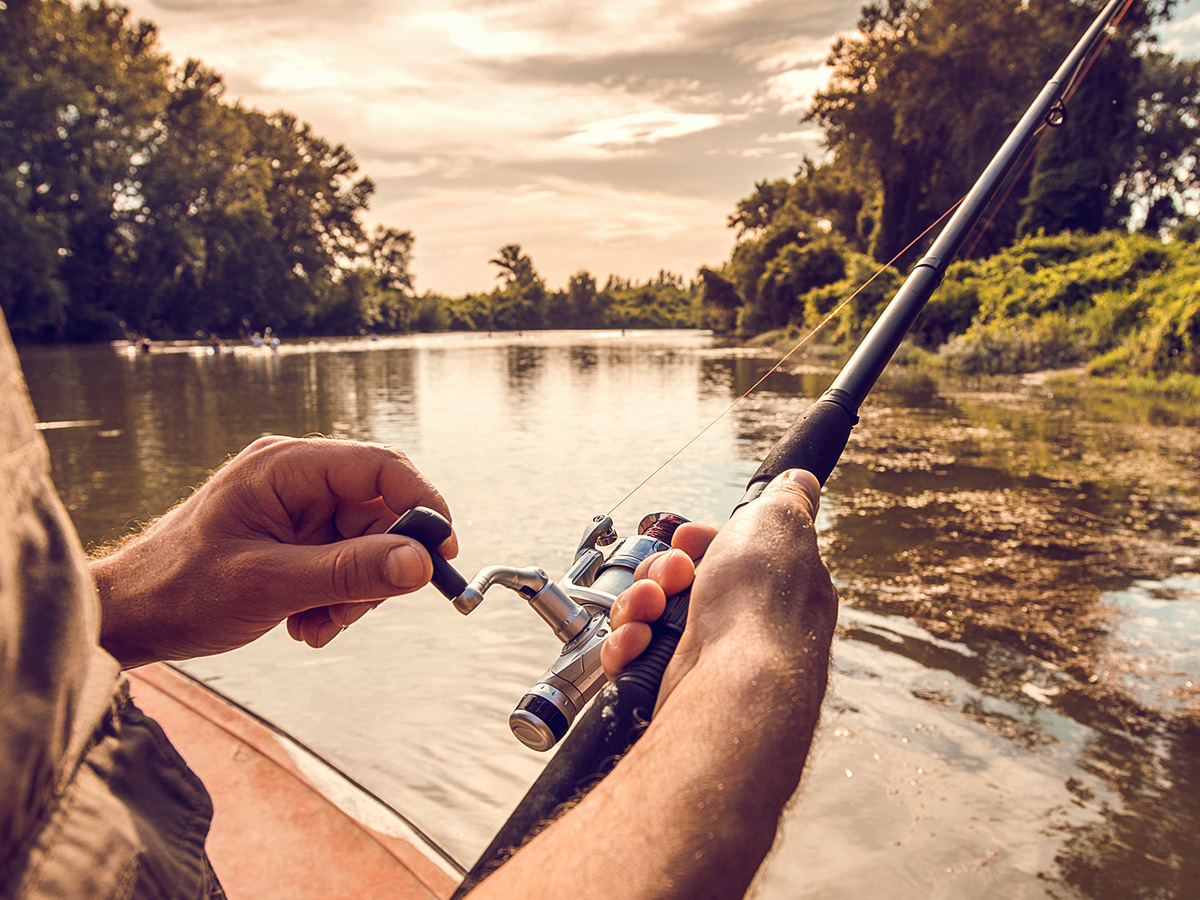Choosing Between Fly Fishing and Conventional Fishing
April 17, 2021
Your fishing adventure in Oregon and Washington starts with a license, directions to a body of water, and a clear choice between conventional and fly fishing. We chatted with a fly fishing champion about those differences and some of the basics to help choose your path to a sport that has captivated Americans for generations.
Start with the Right Gear
The Oregon Department of Fish and Wildlife (ODFW) can help you prepare for your fishing trip, including information on the types of poles and reels you’ll need for both fly and conventional fishing. Need to learn how to tie fishing line knots? This conventional and fly fishing knot guide can help you out.
Know the Rules and Get Your License
Download the rules and regulations for Oregon and Washington before heading out to your favorite lake or stream. These rules cover both conventional and fly fishing. And don’t forget about licenses, necessary for all types of fishing in both Oregon and Washington. In Oregon, everyone 12 and older will need a license, while in Washington you need a license starting at age 15.
The Big Difference Between Fly and Conventional Fishing?
Most fishing enthusiasts will compare the two like this: fly fishing uses a weighted line to deliver a nearly weightless fly into the water. This type of fishing can be ideal for moving water such as rivers and streams, but many fly fishing experts love to cast in lakes and ponds as well. Conventional fishing uses a nearly weightless line to deliver a weighted bait, such as worms, fish eggs, and power bait. It is most prominent on lakes, ponds and reservoirs.
For Blake Reimer, professional angler and owner of Discovery Fly Fishing (discoveryflyfishing.com), where folks of all levels can learn about fly fishing and casting, the type of fishing you choose should depend on the level you want to take the sport.
According to Reimer, a Best of the West Fly Fishing Champion, Orvis Fly Casting Champion, and NW Fly Casting Expo Champion, conventional versus fly fishing is like comparing rifle hunting to bow hunting.
“Conventional fishing is a great gateway into the sport,” he said when asked about the differences. “But with fly fishing, you get to do more. You get to read the water, watch for insect hatch and fish resting places. Fly casting is a lot of fun, but I recommend people practice their casting before they go fishing.”
Reimer started fishing when he was five and fly fishing in his teens. By his 20s, he was practicing in the street and city parks to perfect his fly fishing skills — sometimes late into the night.
“I still practice in the street but prefer parks and grass fields. Casting is a lot of fun.”
What are Flies?
Flies, made by attaching hair, fur, feathers and the like to a hook, are specially-tied lures that mimic insects and other food fish like to eat. These include dry flies that float on the surface of the water), nymphs (that are weighted to go below the surface), emergers, streamers, and more. Because flies are light, it’s possible to delicately land the fly near where fish are congregating or hiding to lure them to the bait.
“As long as a fish swims within the top 30 feet of water, it can be caught with a fly,” Reimer explained. “While conventional gear can catch fish hundreds of feet down, fly fishing is really meant for that top portion of the water.”
Conventional fishing bait, unlike flies, sinks into the water and can include plastic baits, plugs, worms, leeches, minnow, crickets, and fish eggs. Of course, double-check that the bait you’re using is regulation friendly to avoid a fine.
Is Casting the Same?
Because conventional fishing lines are lightweight and the bait is weighted, casting is relatively simple. It’s all a matter of a flick of the wrist and some basic techniques. That’s what makes it so great for weekend fishing trips and family outings.
Casting a fly rod takes some practice and skill, explained Reimer. “Casting a weighted line with a weightless fly out to a fish takes time to perfect. I suggest people start with dry flies and then move to nymphs, which can produce more fish. Drys are easier to cast and you can cover more water.”
Once you get good at either method of fishing, the sky is the limit according to Reimer. That includes steelhead, salmon, trout, bonefish, carp, bass, cod and more.
Which Should You Choose?
The type of fishing you choose really should depend on how far you want to take the sport. If your idea of a good adventure is popping open a camping chair and relaxing by the water or on a boat while regularly checking your line, then conventional fishing is for you. Sure, you can take it to the next level, but there’s no requirement to do so. Fly fishing adds extra depth to the sport, giving you the chance to read the water, and do a little more hunting.
Start Your Fishing Trip at Coastal
Our outdoor experts can help you pick the right rod and reel and pack your tackle box with the right essentials. That includes rods and reels, fishing line, bait, hooks, flies, bobbers, power bait or power eggs, worms, and spinners. Get all of it at Coastal, including the right clothing to keep you comfortable in any weather.
